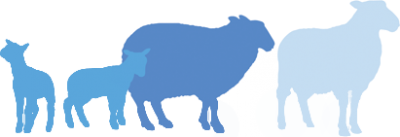Top tips, training and further help for dog owners
Keeping your dog on a lead in areas where sheep graze is the best option for avoiding sheep worrying. Alternatively, you can avoid grazing sheep altogether by using a designated Dog Walking Field - securely fenced, private, off lead areas for exercising dogs.
NSA is aware of several througout the UK, which exist in the form of fields for hire such as the SpringRise Playground for Dogs in the South East of England and/or public parks with designated dog walking areas. You can find your nearest facility on this Dog Walking Fields map.
NSA also encourages owners to consider training courses to increase their ability to control their pet. There are a number of courses available. Two that NSA is aware of are offered by Tobin Bird of Sheep Proof your Dog and Keith Fallon of Cotswold Pet Services.
With his experience of running a Canine Country Etiquette Training Programme, Keith says there are plenty of things dog owners can do to be able to enjoy the countryside without worrying about their pet’s behaviour.
Keith says: “Dogs need to get out and have a good run off the lead, but it’s important to remember that sheep are a farmer’s livelihood. The consequences of sheep worrying can be very serious, so you must take precautions to make sure that you can enjoy a walk with your dog safely. Knowing that you can keep your dog under control means that you and your pet can both have fun, and removes the stress of taking an unruly dog out in the countryside.
“It is important to train your dog properly if you want to let it off the lead in the countryside. You should be able to stop and recall your dog effectively. Your dog should be kept on a lead around sheep, and you need to be able to get it back to you and on the lead quickly when you encounter sheep. Having a dog which is well trained and reliable takes the stress out of walking in the countryside and allows you and your dog to enjoy getting some exercise together.”
Keith’s Top Tips
- The three most important commands are sit, stay and recall. A really well-established sit command will stop a dog anywhere. A strong ‘stay’ command will prevent your dog running ahead and possibly into livestock, enabling you to make sure your dog waits for you when going through gates and getting out of the car for example. It is vital that you can reliably recall your dog, so that you can bring him back to you and back under your physical control.
- Use a dog whistle. It’s not always possible to use your voice to communicate with your dog across long distances. A dog whistle carries better. You can use the whistle to back up a voice command if your dog is not listening.
- Train your dog in different situations. It’s one thing your dog coming back to you in an enclosed space, but quite another getting it to listen to you in an open field or woodland. Train your dog in a variety of environments, so that when you are on a walk you have as much control as you would indoors. You can even train it in a space with tennis balls being thrown around, to make sure it pays attention when there are distractions. It’s also a good idea to familiarise your dog with sheep, but you must be careful to do this on a lead and without scaring the sheep or leaving the right of way.
- Watch your dog. Make sure you keep an eye on your dog at all times. Look out for warning signs that he’s noticed livestock are around – he might look more alert than usual, wag his tail more, or show signs of having picked up a scent. It’s a case of knowing your dog, and knowing how he behaves when he is aware of sheep nearby.
- Look out for sheep and signs. Be aware that there might be sheep about and try to spot them early. This will give you time to get your dog on a lead and ensure you have it under control. Keep an eye out for signs asking you to keep your dog on a lead, and pay attention to them.
- Teach your dog to ‘leave it’. This means showing your dog something it might be interested in, and rewarding it if it does not react. If it does react, tell the dog to ‘leave it’, take it away from the situation, and then try again. You can apply this command if your dog tries to chase animals.
- Take a distraction for your dog when out on walks. Take a ball or your dog’s favourite toy with you when you go out in the countryside. If your dog does start to chase sheep, you can use this to try and divert its attention away from the sheep. Treats can work as a distraction for some dogs, but it can be difficult to get a dog to focus on a treat in your hand when it is chasing livestock. This tip should be followed as a last resort – it is much more important to prevent your dog from worrying sheep in the first place.
NSA supports tightened regulations surrounding electric dog collars, to ensure they are not misused. However, when used efficiently and responsibly, NSA can see the benefits of their use as a dog training aid, particularly in regards to training dogs not to worry livestock.



